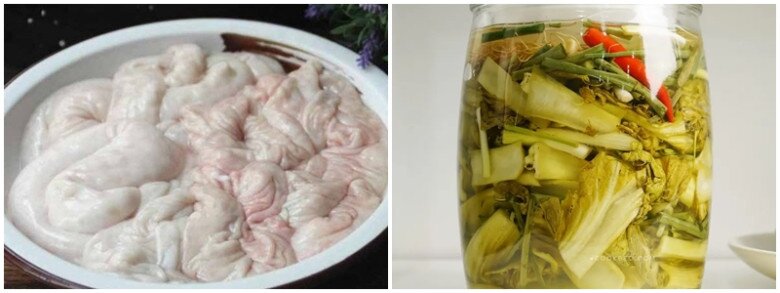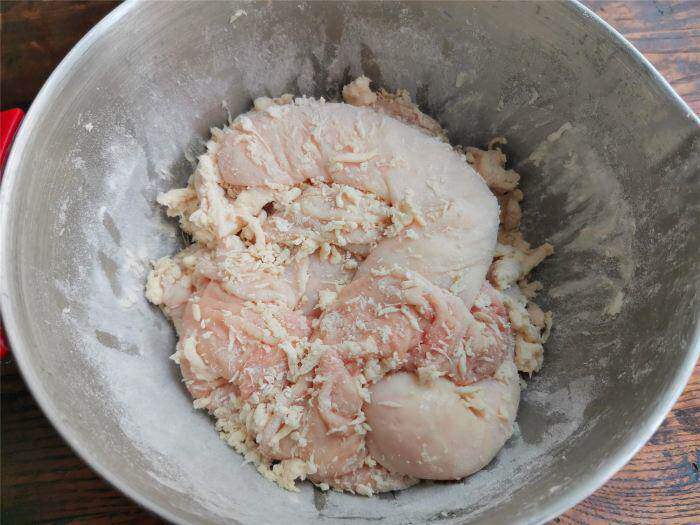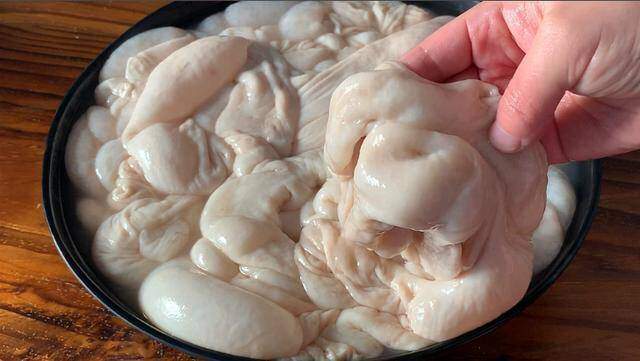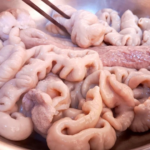Pig intestines, or “old intestines” as they are often called, can be quite pungent due to the waste they contain. If not properly prepared, they can be unappetizing and even unsafe to consume.
Experienced chefs share four methods to help improve the flavor and aroma of this delicacy. Let’s explore these techniques to enhance your culinary experience with this unique ingredient.
Soak the intestines in pickled radish water
Pickled radish water is easily accessible; you can either make it at home or purchase it from a store. This solution helps rinse and neutralize the unpleasant odor of the intestines.
It is recommended to wash the intestines twice with the pickled radish water to effectively eliminate the foul smell and greasy residue. After soaking, place the intestines in a pot, add water, and season with a spoonful each of salt and white rice wine. Bring it to a boil until the intestines turn white and firm up. This process should only take a few minutes, as overcooking will result in tough and chewy intestines. Now you have thoroughly cleaned intestines ready for slicing and further cooking as desired.

Using salt, vinegar, and rice water
This method is straightforward. Start by trimming away any excess fat from the inside of the intestines with scissors. Rinse them thoroughly under running water, then turn the intestines inside out with your hands. Prepare a basin of clean water with a pinch of salt and vinegar, and soak the intestines for a few minutes. Turn them inside out again and squeeze out the greasy residue, rinsing multiple times to ensure cleanliness. Finally, soak the intestines in a basin of rice water and scrub them a few times to ensure both the inside and outside are spotless.
Utilizing flour and cooking wine
As with the previous method, begin by trimming away any excess fat and rinsing the intestines. Turn them inside out, then place them in a basin and add flour. Use your hands to rub and knead the flour into the intestines for about 2 minutes. Rinse with clean water, turn them inside out again, and repeat the flour application and kneading process for another 2 minutes. The flour will absorb any remaining impurities. Finally, rinse the intestines once more.
To finish, pour cooking wine over the intestines and scrub both the inside and outside once more. This process effectively eliminates any lingering odor and residue within just 5 minutes.

Applying vinegar and alum
Start by trimming away any excess fat and giving the intestines a thorough rinse. Prepare a solution of vinegar and alum in water, and use it to scrub the intestines vigorously. Finally, rinse the intestines multiple times to ensure they are free from any residual vinegar or alum solution.

We hope these techniques inspire you to create delicious and safe dishes using pig intestines! Bon appétit!
The Ultimate Guide to Cleaning Pork Guts: A Simple and Affordable Solution for a Fresh, Odorless Clean.
Introducing the Ultimate Guide to Cleaning a Pig’s Stomach: Your Go-To Resource for a Spotless Clean.
This comprehensive guide will take you through the intricate process of purging a pig’s stomach, offering an effective, memorable strategy. It’s time to elevate your cleaning game and impress with your impeccable skills.
































